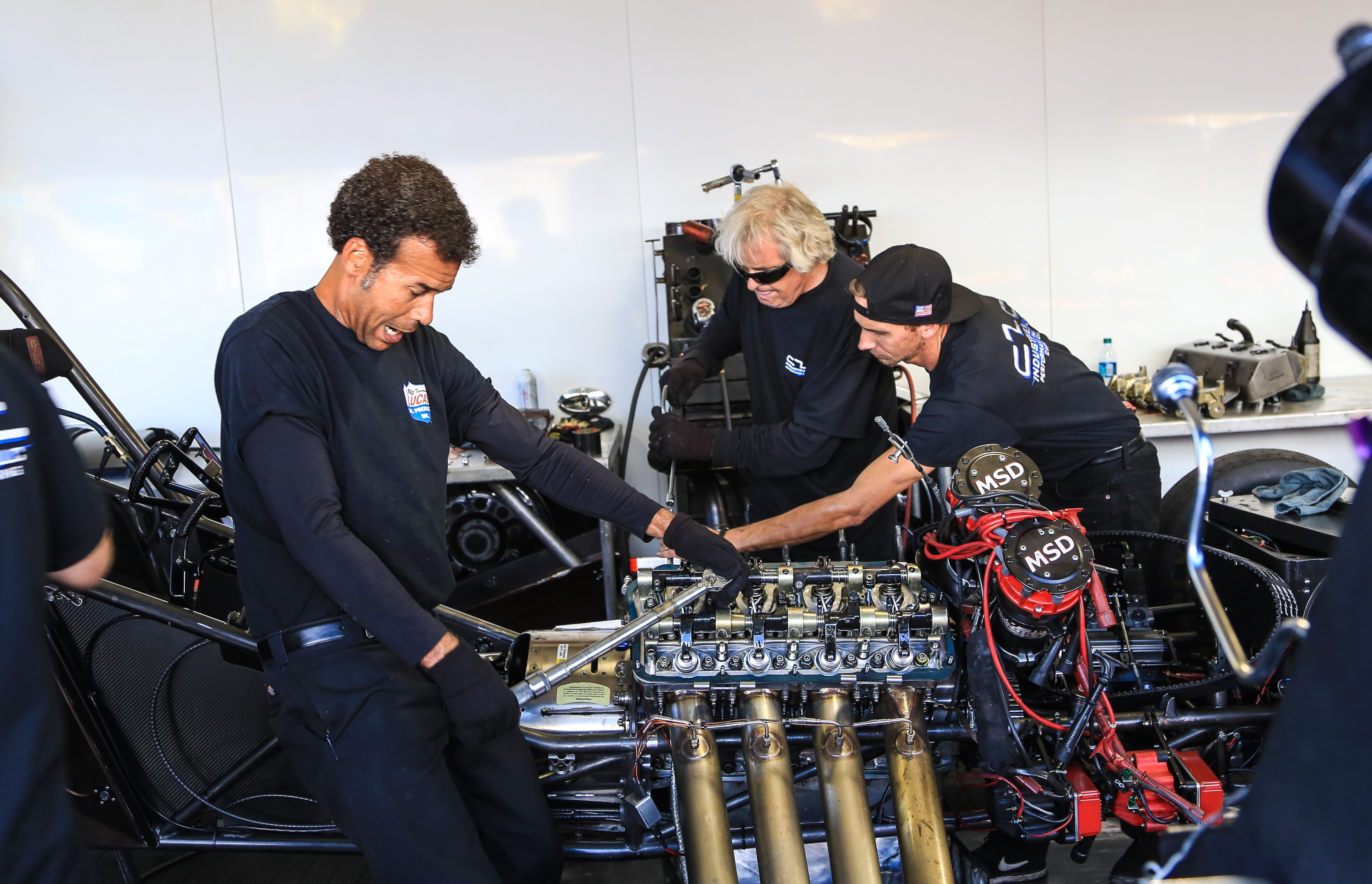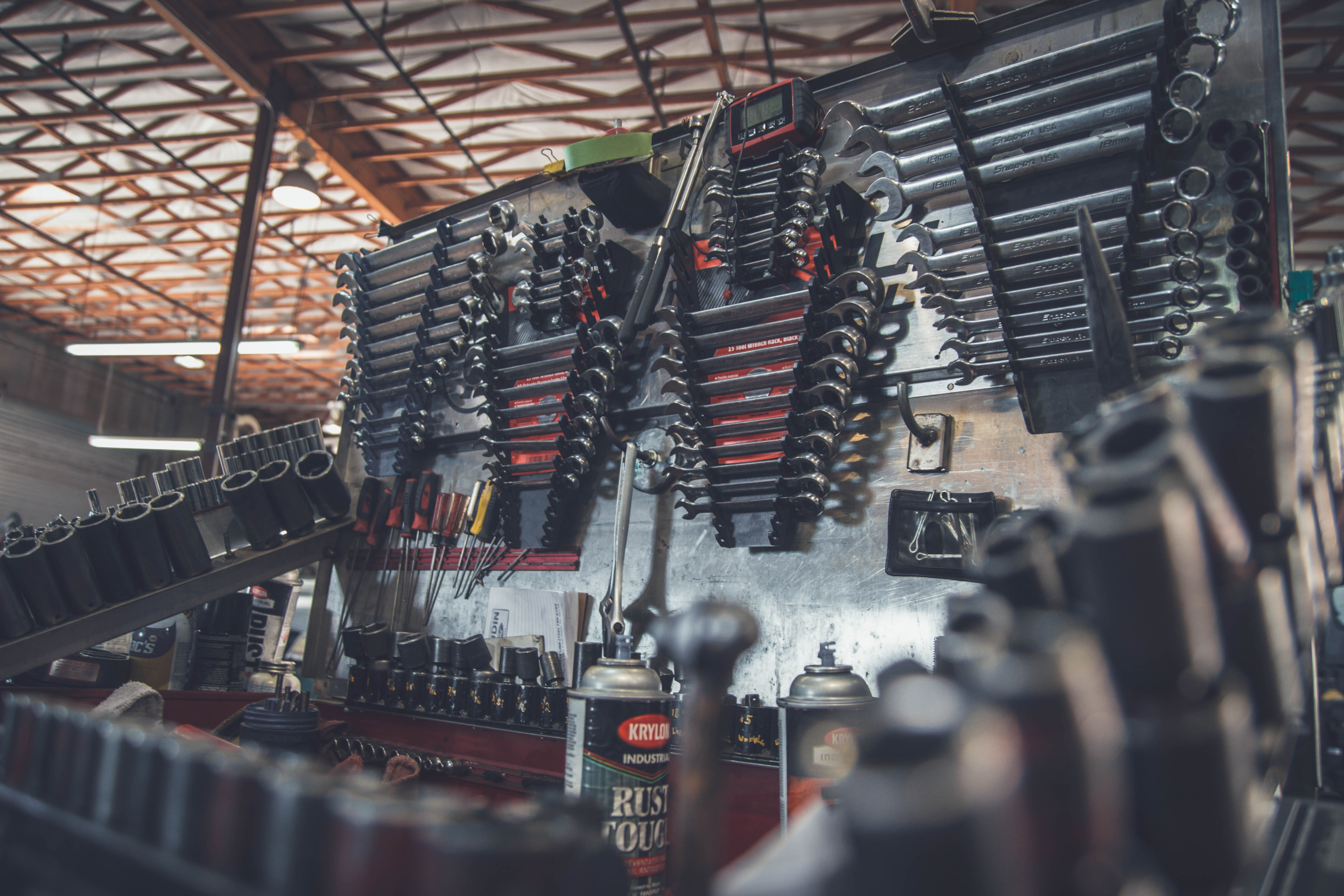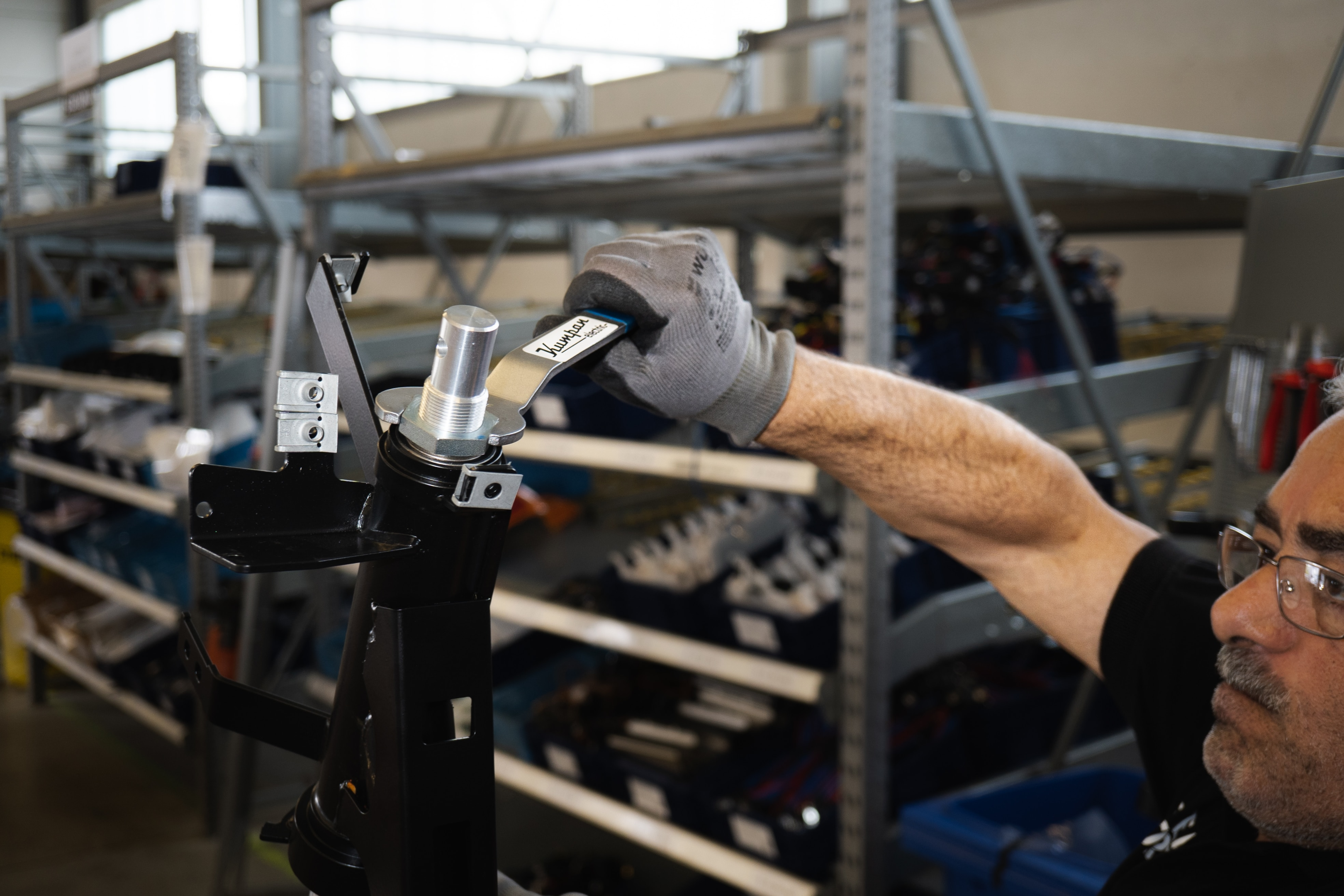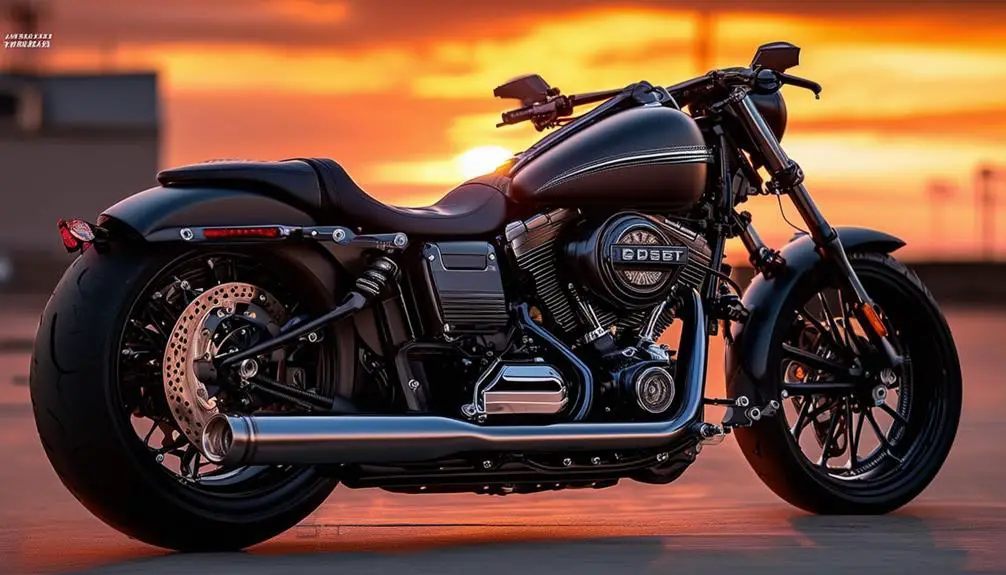While there are many similarities between impact wrenches, breaker bars, and torque wrenches, there are some key differences that need to be understood before you take these tools into the real world.
Improper use of these tools can ruin your project, your job, and if you’re a professional, your career.
Keep on reading to understand everything you need to know about impact wrenches, breaker bars, and torque wrenches, for DIYers and professionals alike.

What Is A Breaker Bar?
A breaker bar is a long-handled tool used to apply torque to a fastener, typically a nut or bolt, in order to loosen or tighten it. It is designed to provide additional leverage and force that cannot be achieved with a standard wrench or ratchet.
Examples of situations where a breaker bar may be necessary include removing stubborn lug nuts from a vehicle’s wheel, loosening rusted bolts on machinery, or tightening large bolts on structural components.
What Is A Torque Wrench?
A torque wrench is a specialized tool used to tighten nuts and bolts to a specific level of torque. It is an essential tool for those who need to ensure that fasteners are tightened to the correct specifications.
Torque wrenches come in various types, including beam, click, dial, and digital. Examples of torque wrench use include tightening lug nuts on a car wheel, securing bolts on an airplane engine, and assembling machinery in a factory. The use of a torque wrench ensures that fasteners are tightened correctly and prevents damage or failure due to over-tightening or under-tightening.
What Is An Impact Wrench?
An impact wrench is a powerful tool that is used to tighten or loosen nuts and bolts through the use of electricity or compressed air. It works by delivering high torque output through a series of quick, powerful blows to the fastener. This makes it an ideal tool for heavy-duty applications where traditional hand tools are not sufficient.
Examples of applications include changing tires on a car, assembling heavy machinery, and tightening bolts on a bridge or building structure. Impact wrenches come in various sizes and types, including corded and cordless models, pneumatic models that use compressed air, and hydraulic models that use fluid pressure.

Important Differences: Torque Wrench vs Breaker Bar vs Impact Wrench
A torque wrench, breaker bar, and impact wrench are all tools used for tightening or loosening nuts and bolts; however, they differ in their functionality and purpose. A torque wrench is used to apply a specific amount of torque to a bolt or nut, ensuring that it is tightened to the manufacturer’s specifications.
On the other hand, you use a breaker bar to break loose stubborn bolts or frozen nuts that are difficult to remove. It provides leverage and allows the user to apply more torque than with a regular wrench, but is not designed to be a precision instrument like the torque wrench.
An impact wrench is a power tool that uses compressed air or electricity to quickly tighten or loosen nuts and bolts. It is commonly used in automotive repair and construction industries through the use of a specified impact socket.
In summary, while all three tools serve a similar purpose, they differ in their application and level of force applied.
Can You Use A Torque Wrench To Loosen Bolts?
No, you should not use a torque wrench to loosen lug nuts or bolts. A torque wrench is a precision instrument that is used in precise mechanical applications; this means, that a very specific level of torque is required. This is applicable to rebuilding engines, to tighten lug nuts, or to tighten other important structural components regardless of application. In other words, torque wrenches are used whenever precision is necessary.
A torque wrench can be damaged if used as a breaker bar. If you apply too much torque in the counter clockwise direction (loosening), you run the risk of damaging the gears inside of the torque wrench as they were not designed to be used as a breaker bar.
[recent_post_carousel design=”design-1″]
Comparisons Between a Breaker Bar vs Impact Wrench
When it comes to loosening stubborn nuts and bolts, you can use a breaker bar or an impact wrench. Using a breaker bar involves using its long handle to generate leverage, to manually loosen bolts and nuts. On the other hand, an impact wrench uses compressed air or electricity to deliver high torque output to loosen tight bolts quickly.
Both tools are commonly used in automotive repair and maintenance, as well as in construction and industrial settings to install and remove tight nuts. While a standard breaker bar may be more suitable for larger nuts and bolts that require more force, an impact wrench can save time and effort when dealing with multiple tight fasteners or tight spaces. Ultimately, the choice between a breaker bar and an impact wrench will depend on the specific task at hand and personal preference.
Will An Impact Wrench Work Better Than A Breaker Bar?
As with most things, the answer is yes and no. In my own personal experience, an impact wrench is able to loosen most things; but there have also been situations where using a breaker bar, I was able to easily remove frozen nuts when the impact wrench was not able to. I suspect that this is due to the natural constraints of the impact wrench (maximum torque and air capacity) where the breaker bar allowed me to use greater leverage, which generated the necessary force to loosen the fastener.
However, if your objective is speed, an impact wrench is much faster to remove lug nuts without other obstacles in your way. Do be aware that you can apply too much force this way, so it is wise to always have these two tools on hand just in case.

How To Use A Breaker Bar
To use a breaker bar:
- select the correct size socket for the bolt or nut you want to loosen or tighten
- equip your protective gear (safety glasses, gloves, etc..)
- attach the socket to the breaker bar by inserting it into the square drive end of the bar.
- position the socket onto the bolt or nut
- apply pressure to the breaker bar in a clockwise or counterclockwise direction
- use slow and steady force to avoid damaging the nut or bolt
- once you have loosened or tightened it, remove the breaker bar from the socket and store it in a safe place.
Overall, you can see that it’s relatively easy enough to use a breaker bar but it will require some forethought and appropriate setup to do so correctly.
What Can I Use Instead Of A Breaker Bar?
In reality, using a breaker bar is all about achieving more leverage to generate greater torque and more power. This means that you can use anything as a breaker bar as long as it is sturdy enough to withstand the force being applied to it. An important factor in a professional setting is only using high quality breaker bars as you do not want to put yourself at risk through repeated use.
DIY Breaker Bars
In my experience, DIY breaker bars can be found in something as simple as a piece of PVC pipe, or a metal pipe. I’ve used both of these things as a breaker bar by sliding them over the end of a standard length socket wrench and using them to leverage the force I needed to apply. This is best used for smaller nuts, as less force will be required and it’s likely that a standard socket wrench will not stand up to as much force.
What Is A Wrench Cheater Bar?
A wrench cheater bar is similar in concept to what I described as a “DIY breaker bar”. Since we’re focusing on leverage, you can slide a box end wrench, over another wrench, and use it to generate leverage more torque (force) to loosen the fastener.

How Much Torque Can Breaker Bars Take?
Each breaker bar will vary in the amount of torque that it can take; however, rarely do they exceed 2000 ft. lbs. of torque. Do keep in mind that in most cases, we will be limited by the force we can apply to the breaker bar, not the integrity of the breaker bar itself.
Otherwise, it depends on what inch breaker bar you’re using, as different lengths will determine your available torque, and therefore the force that is being applied to the tool. For example, a longer handle will allow for more torque to be applied to the tool, whereas a smaller size breaker bar will not withstand the same amount of force.
FAQs
What Is A Breaker Bar Used For?
A breaker bar is a tool used to apply more torque to a fastener, typically a nut or bolt, in order to loosen or tighten it. It is designed to provide additional leverage and force compared to a standard ratchet wrench, making it useful to remove frozen lug nuts and other stubborn fasteners.
Can I Use An Impact Wrench To Tighten Bolts?
Yes, an impact wrench can be used to tighten bolts. However, it is important to use the correct size and type of socket for the bolt being tightened, as well as the appropriate torque setting on the wrench. Impact wrenches are designed to deliver high torque output quickly, making them ideal for tasks such as changing tires or removing a stubborn nut or bolts. However, over-tightening bolts can lead to damage, or failure, of the fastener or the surrounding components.
Can You Use A Torque Wrench As A Breaker Bar?
A torque wrench and a breaker bar are two different tools that serve different purposes. A torque wrench is used to tighten bolts to a specific torque specification, while a breaker bar is used to loosen stubborn bolts or nuts. While it may be tempting to use a torque wrench as a breaker bar, it is not recommended. Torque wrenches are designed to measure and apply torque in a specific direction, and using them as a breaker bar can damage the tool and affect its accuracy.
What’s The Difference Between A Torque Wrench and A Ratchet Handle?
A ratchet handle is the handle end of a socket wrench that is equipped with a ratcheting mechanism; whereas a torque wrench is also a socket wrench equipped with a ratcheting mechanism but has a longer handle and is designed to mitigate the maximum torque output to apply a very specific amount of torque to a fastener. Oftentimes, a breaker bar is applied to the end of a ratchet handle for increased torque but this should not be applied to torque wrenches.
Can I Use A Ratchet As A Breaker Bar?
You can use a ratchet as a breaker bar, just know that it runs the risk of damaging the internal components (gears) inside of the ratchet. I’ve done this many times myself throughout my career, but I’ve also replaced quite a few ratchets because of this.
Will An Impact Wrench Break Bolts?
Yes, an impact wrench can break bolts if you’re not careful. Depending on the maximum torque output of the impact wrench, you run the risk of cross threading bolts, or shearing them off completely.
How Much Torque Can A Breaker Bar Generate?
The amount of torque that a breaker bar can generate depends on several factors, including the size breaker bar being used, the material it is made from, and the force applied by the user. Generally speaking, a high-quality breaker bar made from durable materials such as chrome vanadium steel can generate up to 1,000 ft-lbs of torque or more








Leave a Reply
You must be logged in to post a comment.